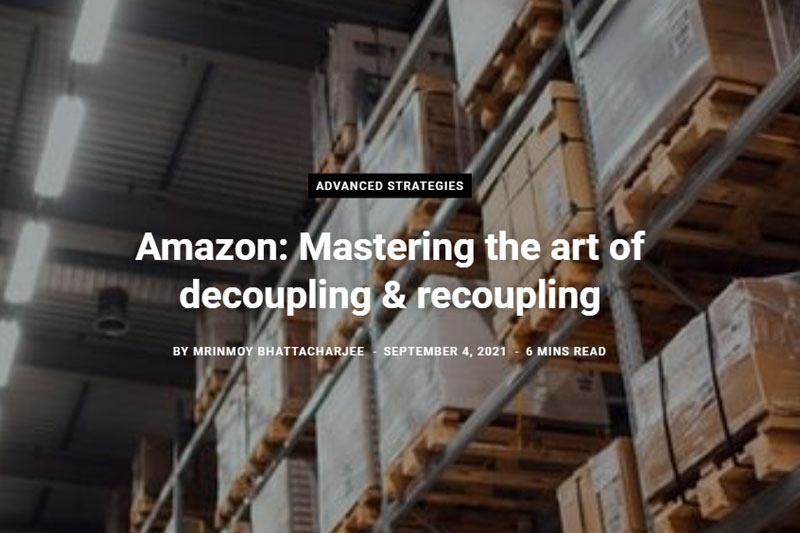It is not hearsay that Amazon.com Inc. has plans to open a number of large brick-and-mortar retail stores across the United States. These physical units are most likely to operate in the format of department stores offering clothing, household items, electronics, and many more categories, which could be further detrimental for the incumbents running in this space.
This move of Amazon can possibly stymie the recovery of businesses for other bricks-and-mortar retailers who could somehow sustain the impact of Covid 19.
Creating Moments-of-Truth is more critical than mere scope for consumption.
The intent seems to be noticeable. The Seattle headquartered e-commerce behemoth has been in the process of morphing into an entity that would be optimally hybrid. Amazon had already conveyed its plan to rule the physical space of retailing, just like the virtual space, when it acquired Wholefoods and subsequently ventured into Amazon Go stores.
It has also been spreading its arm in bricks-and-mortar retailing in India by acquiring stakes in one of the largest retail houses, The Future group. Needless to mention that all these moves have been a part of a calculated and well-thought strategic roadmap to create a seamless and bespoke buying experience for twenty-first century customers, who have exposure, expectations, and willingness to experiment.
The burgeoning expectations of customers from businesses and brands to create a magical experience in shopping is pragmatically addressed by carefully crafting and incorporating elements of experience in every moment of truth that Amazon makes for its customers. The retail goliath has very effectively leveraged the power of data and analytics to deliver a highly personalized experience to customers.
Amazon-Spotting the weak links of incumbents - The process of decoupling
However, the Amazon that we know today is an evolved entity, both vertically and horizontally integrated. In fact, it literally owns and controls the entire value chain of the customer buying process, which was not the case when it started.
As a matter of fact, during the holiday shopping season of 2012, Amazon became a reason of dismay for BestBuy’s CEO, who, despite witnessing a colossal footfall across its fifteen hundred stores in the US, was unable to convert them into sales. BestBuy’s sales fell that quarter by almost four percent. This was because Amazon successfully decoupled and hijacked a stage of the customer buying process, the stage of comparing alternatives and their prices.
Instead of buying, the customers scanned barcodes of the displayed products in BestBuy stores and instantly compared those with the products available with Amazon and other online retailers. The outcome was detrimental for BestBuy.
As elaborated by Thales S. Teixeira in his book titled, unlocking the customer value chain, published in the year 2019, decoupling is an enormously powerful business strategy to hack the value chain of the incumbents in any industry by identifying and arresting a particular stage of the value chain which the incumbents sub-optimally or poorly address.
Decoupling is metaphorically akin to mechanically changing the railway tracks at a certain point to change the direction of the train. The train here is the customers, and the track is the stages in the buying process. Many successful technology start-ups have principally adopted this strategy to disrupt the incumbents’ businesses and redefine the process of consumption.
Disruptive consumer experiences are irreversible.
Technically, this is also the process of disruption in business, which starts from a particular stage of the customer value chain by heightening the richness of experience of that stage, consequently hooking customers into the new behaviour.
According to Mr. Kunal Shah, the founder of Indian Fintech start-up, CRED, for any business model to be potentially disruptive, there should be a delta of a minimum of four between the previous consumption experience and new consumption experience perceived by the customers. (Score of new customer experience/10 – score of old customer experience/10) >= 4.
The new consumption behaviour then becomes irreversible and brag worthy. He further affirms that creating delta four business models or consumption experiences can help start-ups avoid prominent advertising and promotion budgets.
The cycle of disruption gets completed only through recoupling.
Decoupling, however, is only the first half of the story. Successful and sustained migration of customers to new consumption behaviour can only be warranted by re-joining the broken stages of the value chain.
This second half of the story is known as recoupling. Any new business must foresee the scope of recoupling with the same degree of clarity with which it could spot the weak link in the incumbent’s value chain and replace it with its own. Despite the digital revolution and proliferation of electronic commerce, retail consumers have not jettisoned physical store experiences.
Instead, consumers expect retailers to complement their in-store experience with virtual and vice versa. It is a challenge and, at the same time, an opportunity for retailers to create an ecosystem that cuts across the spectrum of tangibility and intangibility. Today, technology itself is not a differentiator but a tool, available and accessible to all, which needs novelty in the integrated way it creates unique and new consumption experiences for customers.
Amazon is on its way to write the second part of the story of disruption, which is about fortifying its boundaries by re-linking the stages of the customer value chain before the competitors build one. Its focus on expanding its physical footprint by opening large departmental stores across the United States is further towards building a hybrid retail ecosystem: An impermeable and unbreakable ecosystem.
Today’s hyper-competitive business landscape demands agility and scalability with a distinct capability to envisage the changing dynamics of customer buying behaviour or value chain. Understanding behavioural adjacencies and designing stages of consumption with clarity on which are the one that needs to be built in tandem is critical. The art of breaking and rebuilding the consumption process is the key to sustainable business.








